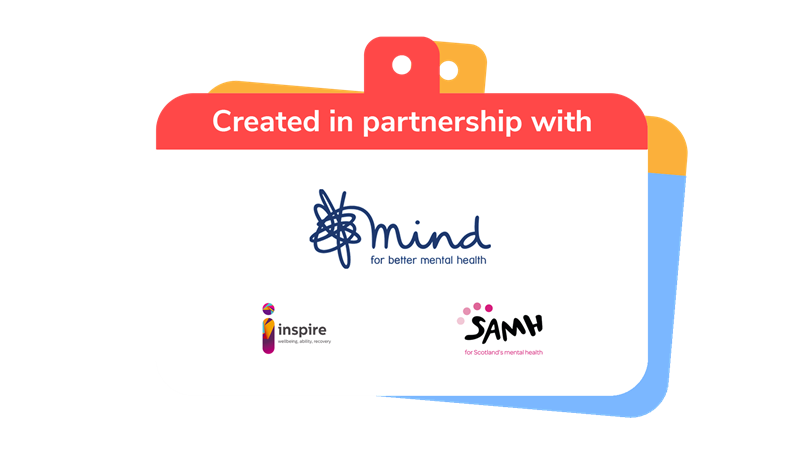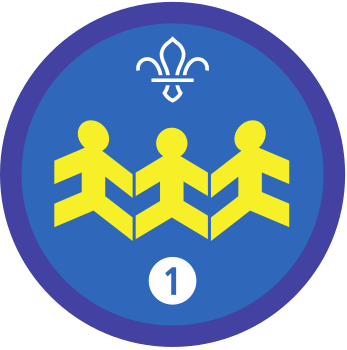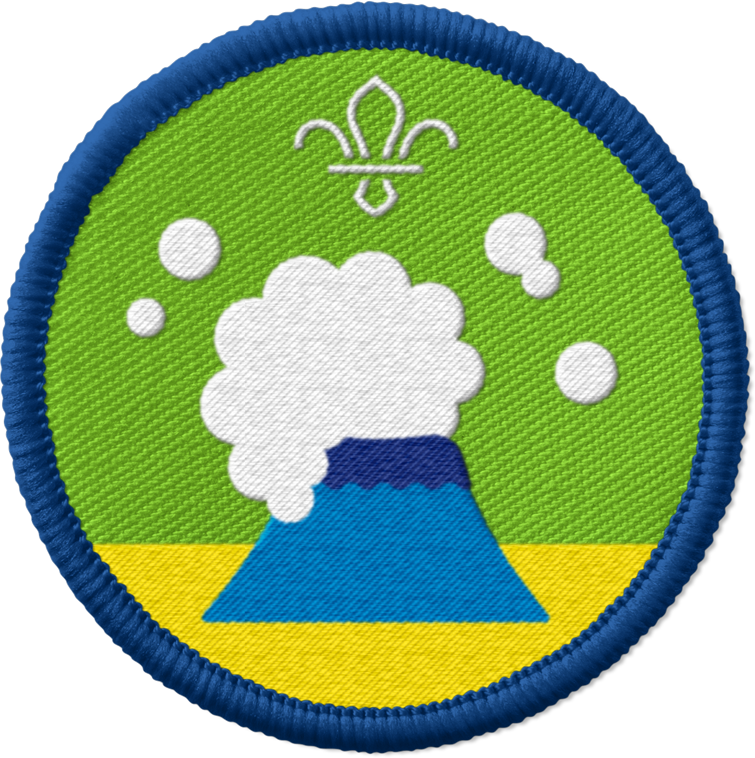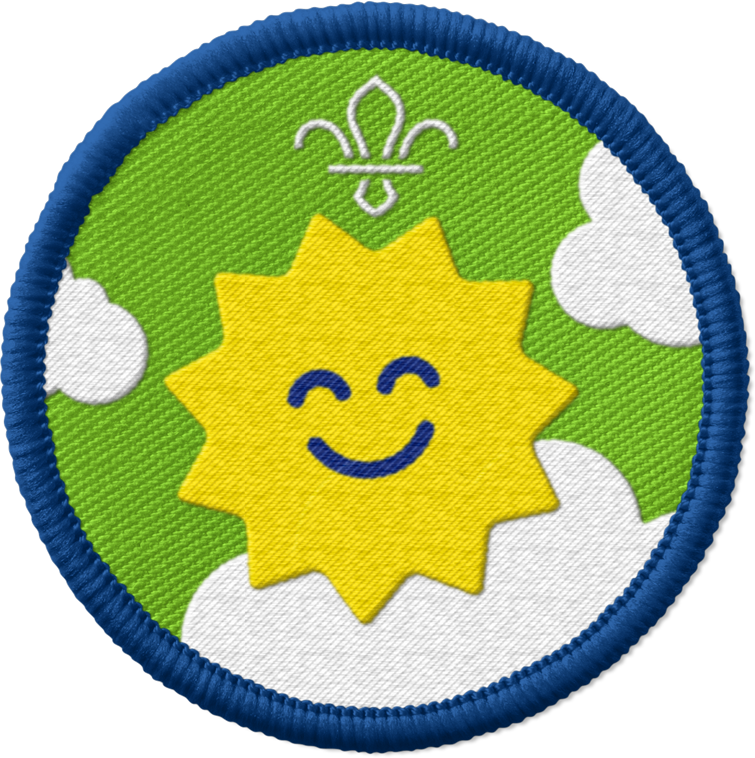
Try some mindfulness techniques
You’ll need
- A speaker
- Bubbles and bubble wand (one per person)
- Some soft cushions (optional)
Before you begin
- Use the safety checklist to help you plan and risk assess your activity. Additional help to carry out your risk assessment, including examples can be found here. Don’t forget to make sure all young people and adults involved in the activity know how to take part safely.
- Make sure you’ll have enough adult helpers. You may need some parents and carers to help if you’re short on helpers.
Planning this activity
- This activity works well at the start or end of a session – or maybe both, if it goes well!
- Think about the quietest, calmest space you can use. It doesn’t matter whether it’s inside or outside, depending on the weather.
- You may want to put relaxing music on in the background to help people to calm.
- Ask people to bring a cushion or pillow from home to lie or sit on during this activity to make them more comfortable.
Give mindfulness a go
- Gather everyone together and explain you’re going to try different mindfulness techniques. You can do as many or as few as you want to. You may just use one to open or close a session.
- It should be a relaxed and calming session, so people should try to be as quiet and still as possible. Remind people they could step out of the circle or space if they want to break or move.
- Ask people to keep their hands relaxed in your lap with your palms facing up, focusing on your posture and sitting up straight. This’ll help you take deep breaths during the exercises.
- Before starting, explain that one of the tools we can use to build our resilience is ‘self-calming’. That means being able to calm our minds and bodies when we’re feeling lots of complicated emotions. This can help us to react better when things are challenging or we’re feeling overwhelmed.
- Tell everyone that you’re going to try different meditation exercises and techniques to create an ‘anchor’. An ‘anchor’ is a special place in our minds that we can remember and imagine whenever we need to feel calmer.
- It can be good to have a movement break or play a quick game between each technique to help people focus and stay quiet or still during the mindfulness activities.
Lie down somewhere comfy and imagine there is a balloon in your tummy.
As you breathe in, imagine the balloon slowly inflates.
As you breathe out, the balloon effortlessly deflates.
For younger groups, people could rest a teddy on their tummy and let them go along for a calming ride.
Give each person some bubble solution and a bubble wand.
Ask everyone to dip the bubble wand in a bubble solution, then take a deep breath and slowly blow out as many bubbles as you can.
Ask everyone to watch all the bubbles float and burst, then close their eyes. They should imagine the bubbles are thoughts leaving your head and bursting into nothing.
When all the bubbles have popped, blow some more bubbles and repeat this.
Keep doing this two or three times, until your breathing calms and you start to feel relaxed.
Starting from your head to your toes, you're going to relax different muscles.
You’re going to squeeze and tighten your muscles, then release them, starting at the top of your body and going all the way down to your toes. As you do, focus on relaxing your body and letting go of any negative thoughts, energy or tension.
Ask everyone to sit down in a space, either on a chair or on the floor.
First, squeeze and clench up your forehead, nose and your jaw. Then relax your face and let your jaw go loose. Repeat this three times.
Squeeze your hands tightly into fists, then release them. Repeat this three times.
Now, stretch your arms in front of you, then raise them above your head and stretch as high as you can, then slowly drop your arms and let them hang loose. Repeat this three times.
Put your hands on your hips and squeeze your stomach muscles as hard as you can, then release them slowly. Repeat this three times.
Press your toes into the floor and squeeze your leg muscles tightly, before relaxing them and repeat this three times.
Place a hand out in front of you with your fingers outstretched.
Put your index finger of your right hand on the top of your thumb of your left hand.
Breathe in slowly through your nose and as you do slide your finger down to the bottom of your thumb or hand.
Breathe out through your mouth slowly and slide your finger back to the top of your thumb.
Keep breathing in and out and repeat this activity for each finger, until you’ve completed your whole hand.
You could then switch hands.
Ask the group to lie down on their back and give them some time to settle and quieten down.
Give them some time to get comfortable. They may want to put a soft hoodie under their head.
Ask everyone to close their eyes and concentrate on your breathing.
Tell everyone to calmly and slowly breathe in deeply for five seconds, then breathe out deeply for six seconds.
Say calmly that we’re going to repeat this a few times, then direct the meditation.
Say ‘Breathe in. Now breathe out. Breathe in, breathe out’
Ask everyone to imagine that each thought that comes to you while you’re focusing on your breathing is a cloud which appears above your head.
Say ‘As you breathe in, notice the cloud. As you breathe out, let the cloud dissolve.’
Repeat this for a few minutes, then ask everyone to slowly sit up.
Ask everyone to find their own space and sit calmly, focusing on their breathing.
Tell everyone you’re going to try an activity based on your senses called 5, 4, 3, 2, 1!
Ask everyone to notice five things that you can see. Cast your eyes around and bring your attention to five things you might not normally notice. Choose something you wouldn’t ordinarily pay attention to, such as a shadow or a small crack in the concrete.
Now, notice four things that you can feel. Bring your awareness to four things you are currently feeling, like the texture of your pants, the feeling of the breeze on your skin, or the smooth surface of a table you are resting your hands on.
Next, notice three things that you can hear. Try to tune in to the sounds of your surroundings. What can you hear in the background? This might be a bird singing, the low hum of the refrigerator, or the faint sounds of traffic from a nearby road.
Focus on two things that you can smell. Tune your senses into smells you might usually gloss over, whether they’re pleasant or unpleasant. Perhaps the breeze is carrying the scent of pine trees if you’re outside, or the smell of cafe from the sidewalk.
Now, notice one thing that you can taste. Focus on one thing you can taste right now, in this moment. You can take a sip of coffee, savor some chocolate, eat something, notice the current taste in your mouth, or even open it to search the air for a taste.
Everyone should put their hand on their chest and feel their heartbeat. They should pay attention to their heartbeat, their breathing and how it feels.
Now, ask everyone to move around for one minute. They could jog on the spot or do some star jumps.
Now, ask everyone to put their hand on their chest and feel their heartbeat again.
They should pay attention to their heartbeat, their breathing and how it feels. How does it feel? Can they feel their heart beat in any other part of their body where the blood is pumping through them from the exercise?
Sit up as tall as you can, back to back with a partner. Take a few deep breaths in and out on your own.
Now, see if you can feel your partner’s breathing, and notice how it’s different from yours. Is your partner breathing more slowly than you are? Or faster than you are? It doesn't matter at all, just notice what it feels like.
If you want to, start to match the rhythm of your breath with your partner’s breath. Breathe in at the same time, and breathe out at the same time.
This technique is good for getting to sleep and focusing on your breathing. It’s recommended to do this exercise twice daily.
Breathe in through your nose for four seconds. Now, hold your breath while you count to seven.
Finally, breathe out through your mouth, making a whoosh sound, for eight seconds.
Repeat this cycle three more times for a total of four breaths.
Box breathing, also known as square breathing, is a technique used when taking slow, deep breaths. It’s also called four-square breathing.
Before you get started on this exercise, make sure that you’re seated upright in a comfortable chair with your feet flat on the floor.
Try to be in a stress-free, quiet environment where you can focus on your breathing.
Sitting upright, slowly exhale through your mouth, breathing out deeply. You’re trying to get as much air as possible out of your lungs. Focus on this intention and be conscious of what you’re doing.
Now, breathe in slowly and deeply through your nose for the count of four. Count to four very slowly in your head and feel the air fill your lungs, until your lungs are completely full and the air feels like it’s moving into your abdomen or tummy.
Breathe out through your mouth for the same slow count of four, trying to get as much air as possible from your lungs and abdomen. Try to think about the feeling of the air leaving your lungs.
Ask the group to lie down and get into a comfortable position. You may close your eyes or keep them slightly open.
Explain that you’ll be doing a short body scan, checking in with our bodies and noticing what we’re feeling.
Let your legs and your arms relax and fall to the sides. Settle yourself in a comfort-able position and close your eyes.
Start by taking two or three gentle, large breaths. Pay attention to how that feels. Your tummy rises and falls. Air moves in and out of your body. If you like, place a hand on your stomach and feel it move with each breath.
Now we’re going to pay attention to the other parts of the body.
Start with your feet. They might feel warm or cold, wet or dry, relaxed or restless. It’s also okay if you feel nothing at all.
If you can, relax your feet now. If that’s hard to do, that’s fine. Take a moment and notice how that feels too.
For these few minutes, let yourself be still. There’s nothing to do. Pay attention as best you can. You might feel your shoes or socks on your feet, or you might feel them pressing against the floor.
When your mind gets busy, gently bring your attention back to your feet again.
Now move your attention to your lower legs, noticing whatever is there. Do they feel heavy, light, warm, cold, or something else? Let go of frustration and trying to do anything.
Just do your best and give yourself a few moments of rest.
Next, move your attention next to your knees and relax them. Feel the front, back, and sides of your knees.
After a few more breaths, move your attention to your upper legs. Whatever you feel, or don’t feel, is fine. Notice your legs and let them relax. If you feel restless or wiggly, that’s okay too. That happens.
Now move your attention to your stomach. It always moves when you breathe, rising and falling, like waves on the sea.
You might feel something on the inside, such as full or hungry. You might notice the touch of your clothes. You might even feel emotions in your belly, like happy or sad or upset.
If you feel that it’s hard to focus, that’s normal. Gently practice coming back again and again to how your chest feels when you breathe.
Next, bring your attention to your chest. Notice it rising and falling as you breathe. If you feel that it’s hard to focus, that’s normal. Gently practice coming back again and again to how your chest feels when you breathe.
Now turn your attention to your hands. There is no need to move them or do anything with them. They may be touching the floor, or be somewhere on your body. Relax them if you can, and if not, simply paying attention to your hands for another moment.
Move your attention up into your arms. Maybe notice if you can find a moment of stillness inside you, like the pause at the end of each breath.
Next, move your attention around to your back. How does it feel against the bed or the floor? Notice how it rocks with each breath. When your mind gets busy or angry or scared, you can always come back to how your body feels in this way for a moment.
Now move attention to your neck and shoulders, letting go and relaxing them. If your mind wanders, that’s fine. No one can pay attention all the time. Just keep returning to noticing your body whenever you find yourself thinking of something else.
And now feel your face and head. What expression do you have right now? What would it feel like to smile? What else do you notice in your face, your head, and in your mind?
Finally, spend a few moments, paying attention to your whole body. If it is easier, continue to pay attention to your breath. Remain still and continuing to pay attention to your breath or feelings in your body.
When you’re ready, gently open your eyes and sit for a few moments before deciding when to move again.
Ask everyone to spread out across the space you’re using.
If you’re using music, start the tracks you’ve chosen.
Everyone should sit down and if they’re comfortable, close their eyes. They may want to take their shoes or jacket off, or create a cushion out of a hoodie.
If they’re not comfortable with this, encourage them to sit quietly.
Take them through the meditation narrative below.
Make sure you follow the script below and use a low, calm voice and a slow, steady pace:
Let any tension go, and relax your shoulders until they are loose. Become aware of your breathing and begin to slow it down, by saying to yourself, ‘slowly breathe in, slowly breathe out, slowly breathe in, slowly breathe out.’
Concentrate on my voice as you think of the space you are in. Feel yourself in this quiet space.
Now build a wall around your space. See the wall in your mind. It is a high strong wall.
Think about what’s it made from and what it looks like.
Reach out and touch it.
What does it feel like? Is it cold or warm to touch? Is it rough or smooth?
Pause for five seconds.
In the wall there is a secret door. It’s painted in your favourite colour. You walk up to the door.
You reach out to the handle and slowly open the door. The handle is cold to touch.
The door slowly opens and behind it is a space that feels comfortable, warm and inviting. It might be a room, a burrow, a mountain, a beach, a woodland or a field.
Pause for five seconds.
Enter through the door, making sure that you shut the door behind you. Look around the space and find something you would like to sit or lie on.
If you’re inside, you might find a bed, a beanbag, a hammock, a sofa, a soft rug.
If you’re outside, you might find some tree roots, some smooth grass, some cold snow or some warm white sand.
Pick where you want to sit and slowly walk over to it.
Pause for five seconds.
As you sit down on the comfortable and soft surface you can feel yourself relax. You let yourself sink into the surface. As you sink, your whole body becomes light, calm and peaceful. You feel light, like a cloud.
Pause for five seconds.
Now think about your other senses. What can you hear, see, smell or taste?
Pause for five seconds.
Move your fingertips gently over what your sat on. What does it feel like? Focus on the texture of it.
Pause for five seconds.
As you’re sitting and relaxing, you notice a light breeze blowing. It gently moves your hair and touches your face. You are at a perfect temperature and feel calm and peaceful.
Pause for five seconds.
Take a deep breath as the breeze gently blows around you.
Pause for five seconds.
There might be gentle and quiet noises around you. Focus on where they might be coming from.
Pause for five seconds.
You may find yourself drifting off in this space, and that’s OK. You feel relaxed and still and safe. You’re enjoying sitting in this place and you feel yourself getting lighter and lighter as you relax more and more.
Allow everyone to remain quiet and peaceful for two or three minutes.
Then slowly turn the music down as you say the following:
Get ready now to leave your space and the gentle breeze. In your mind, you will gently stir and stretch your body. When you’re ready, you will picture yourself rising up from whether you’re sitting or lying and stretch your body again.
You make your way to the secret door, open it, and let yourself out, shutting the door behind you.
As you listen to my voice, you are slowly bringing yourself back to this room. Stretch your body and then relax. As I begin to count slowly to five, very slowly open your eyes.
Count slowly to five.
Now stand up, stretch your muscles and relax.
Reflection
This activity was a chance for everyone to boost their wellbeing. In this activity, we tried lots of different mindfulness techniques. Ask everyone which worked best for them and remind them to continue doing it at home or outside the session.
Mindfulness relaxes the parasympathetic nervous system – a bundle of nerves that calms down the body’s ‘fight or flight’ response. Did anyone find that mindfulness helped them feel connected to their bodies?
Sometimes mindfulness can help people notice things, such as any pain you might be feeling from an injury or any emotions you may be having. Can people compare how they felt before and after the activity? Hopefully people felt calmer and maybe more content too.
This activity also needed everyone to care. It can be tricky to stay quiet or still during these activities. We all tried our best to be quiet and still and respect each other’s time. It showed a lot of care.
Remember that as long as someone tried their best, it’s OK if they made some noise accidentally – this shouldn’t be about being cross with or blaming other people.
Safety
All activities must be safely managed. You must complete a thorough risk assessment and take appropriate steps to reduce risk. Use the safety checklist to help you plan and risk assess your activity. Always get approval for the activity, and have suitable supervision and an InTouch process.
If anyone finds it especially tricky to sit still and quiet, think about any strategies that help them. Perhaps they need to understand the point of the activity, use a wobble board or fidget toy, or have the chance to go outside for a break.
All Scout activities should be inclusive and accessible.


